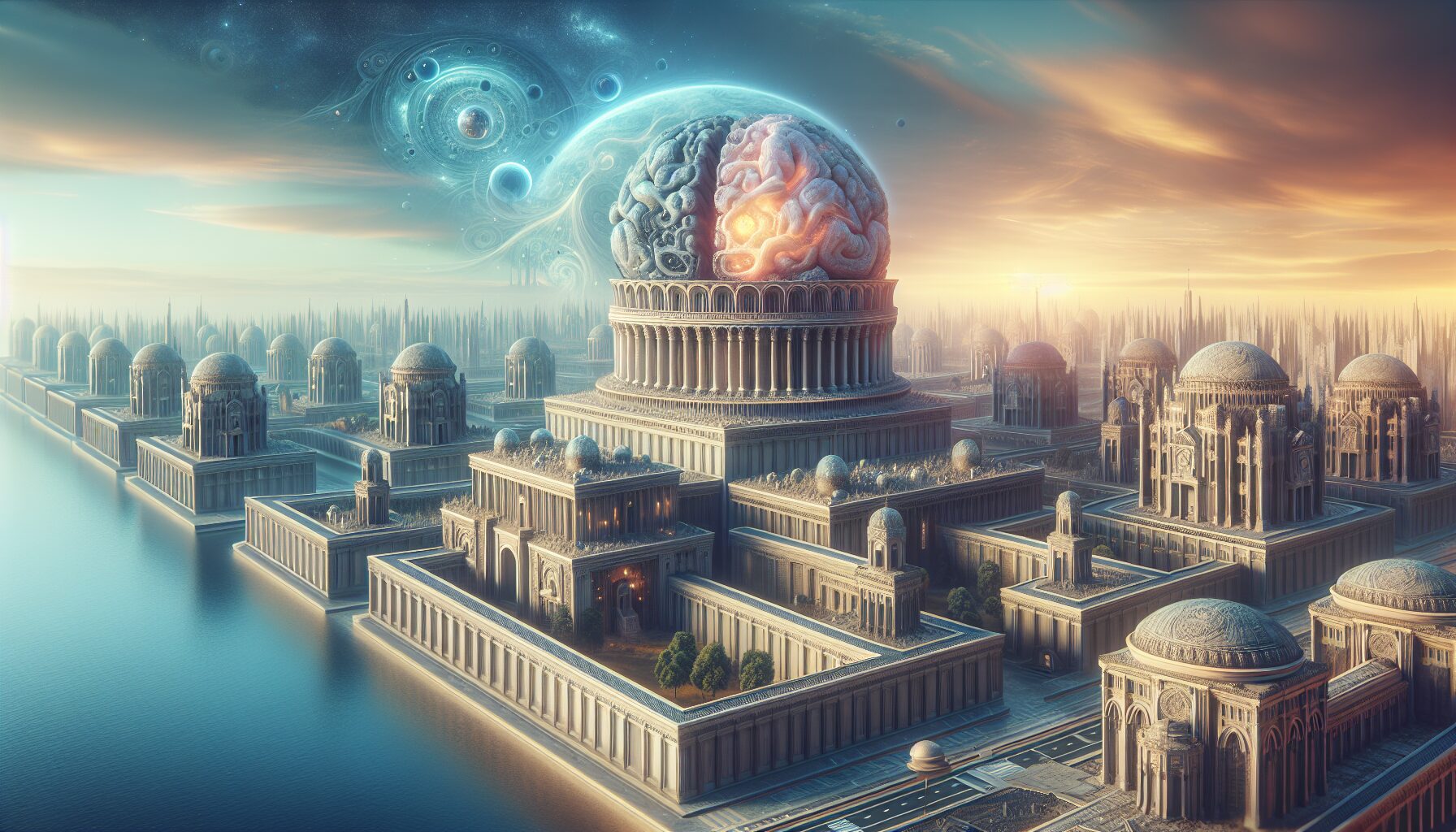Necropolis of Thought – Exploring the Architecture of Consciousness
Consciousness has long been one of the most elusive and profound aspects of human existence. Often described as a paradox or a mystery, it both defines and defies our understanding of the very essence of being. This article embarks upon an exploration of what might be termed the “necropolis of thought,” delving into how architecture serves as a metaphor for consciousness, structuring the intangible and breathing life into the abstract.
The Phenomenon of Consciousness
Philosophers, neuroscientists, and psychologists alike have expressed differing views on consciousness. The debate encompasses discussions about its origins, its necessity, and its implications. Consciousness as we know it arises as the intricate culmination of brain processes; yet, it transcends physical mechanics in ways that invite both wonder and inquiry.
John Searle, a notable philosopher of consciousness, famously stated, “Consciousness is a biological phenomenon like photosynthesis, digestion, or mitosis. Consciousness consists of inner, qualitative, subjective states and processes of sentience or awareness.” (Wired) This definition grounds consciousness not as something supernatural but instead as an integral part of existence through biological processes. Nevertheless, the vast and variable landscapes it presents continue to intrigue scholars and laypeople alike.
Architectural Metaphors in Understanding Consciousness
Consider consciousness as a grand architectural structure, a “necropolis” of thought, populated by phantom ideas and echoes of profound cognitions. This metaphor provides a way to visualize and approach the abstract nature of human consciousness:
- Foundation: Just as a building relies on a foundation, consciousness is grounded in the neural architecture of the brain. The cerebral cortex supports higher-order functions such as reasoning, decision-making, and perception, echoing the support beams holding aloft a mighty structure.
- Design and Structure: Complex and multifaceted, the design of consciousness—akin to cathedral naves or labyrinthine corridors—hosts various cognitive functions. Each thought, memory, and emotion constitutes a different chamber within this elegant cranial edifice.
- Echoes and Shadows: Architectural spaces play with the interplay of light and shadow. Similarly, consciousness is filled with the obscurities of the subconscious, the so-called “corners” where latent thoughts and forgotten memories lurk.
- Public Spaces: The communal areas of a building symbolize shared consciousness or collective unconscious—concepts elaborated by Carl Jung, who proposed that beneath the personal unconscious lies a deeper collective strata shared among humans.
Interdisciplinary Bridges: Neural Networks and Thought Constructs
The analogy between architecture and consciousness is further underpinned by the interdisciplinary nexus bridging neuroscience and artificial intelligence. The human brain, neuroscience postulates, is an intricate network somewhat mirrored by artificial neural networks designed by engineers and computer scientists. As Carver Mead, a pioneer in neural networks, states, “We know way more about how to design computers than we do about how to design organisms. But mimicking some of the brain’s strategies provides us with a glimpse of the design principles underlying organized complexity.”
Dreamscapes and the Subconscious
Dreaming stands as a significant example of the subconscious architecture of thought, where sleeping brains assemble narratives that range from the surreal to the hyperreal. According to Psychology Today, “Dreams function as a simulated world in which the mind tries to solve the informational overload it faces on a daily basis.” This nocturnal kingdom belongs to a deeper level of consciousness, a hidden vault in our necropolis of thought.
The Limits of Language and the Expression of Consciousness
As we explore this existential structure, we encounter the limitations of language in encapsulating consciousness described by Ludwig Wittgenstein: “The limits of my language mean the limits of my world.” The difficulty of articulating thoughts lies within the architecture of syntax itself, where the expression of complex intentionality is often confined by linguistic tools.
Philosophical Perspectives
Philosophical inquiries into consciousness have laid the groundwork for discussions about free will, self-awareness, and the nature of reality. The allegory of the necropolis bears thematic resemblance to philosopher René Descartes, who famously posited “Cogito, ergo sum” (“I think, therefore I am”). Descartes’s meditations parallel the journey through an intellectual catacomb where the mind seeks proof of its own existence amid an empire of thoughts, perceptions, and beliefs.
The catacombs of Paris may capture imaginations with their physical manifestations of historic lives, but within our own biological labyrinths lies no less a gallery of spectral ideas and enshrined memories that define our being.
Potential Futures: The Conscious Machine
With advancements in AI and machine learning, questions arise about the potential for artificial consciousness. Would a conscious machine serve as an architectural replica, an electronic necropolis of thought replicating human cognitive processes? The implications of endowing machines with a form of consciousness challenge ethical perspectives, and educators, policymakers, and technologists must ponder the societal ramifications.
Conclusion
The architecture of consciousness, much like the planning of a sprawling necropolis, remains both vast and intimate — a testament to the complexity of life itself. While technological and scientific advancements offer us glimpses into the corridors of the mind, a comprehensive blueprint of consciousness may forever elude us, a perennial puzzle at the heart of human curiosity.
In contemplating our own necropolis of thought, we are led to a mosaic of realizations. It is this intellectual architecture that underpins identity, fosters creativity, and conjures the enigma we call experience. As explorers of the mind’s grand edifice, we continue our search, conscious that each question answered may unveil even more chambers of curiosity waiting to be discovered.


